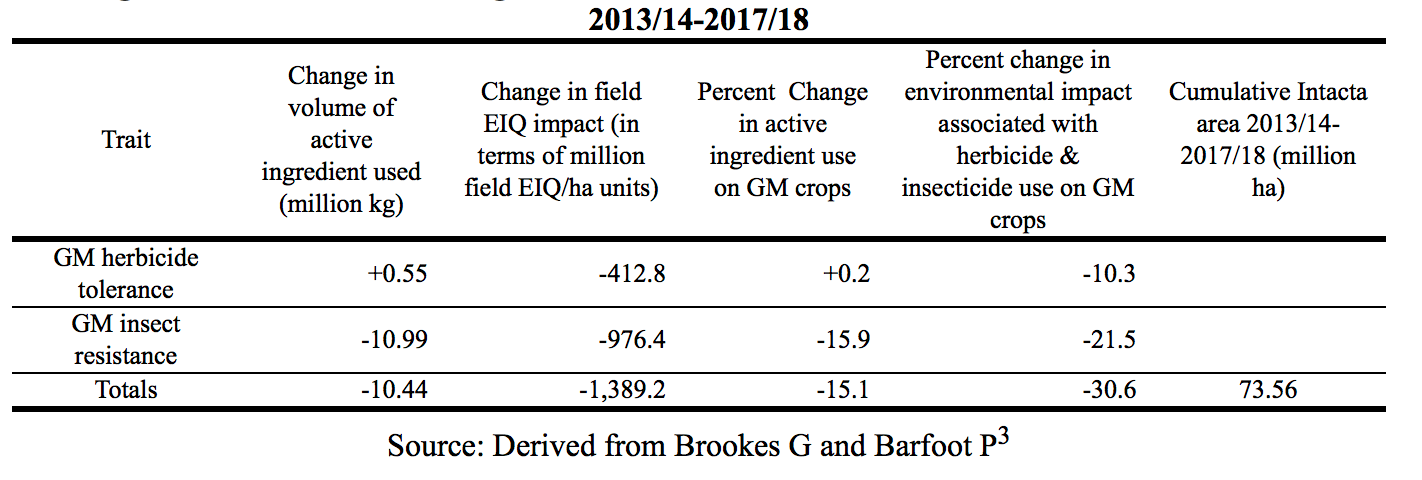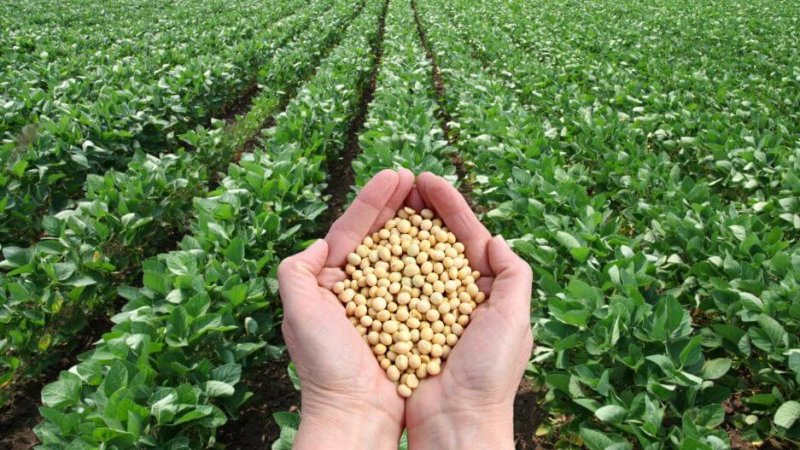This study assesses the economic and environmental impacts that have arisen from the adoption and use of genetically modified (GM) herbicide tolerant (HT) and insect resistant (IR) soybeans in South America in the five years since first planted in 2013/14.
…
For every extra $1 spent on this seed relative to conventional seed, farmers have gained an additional $3.88 in extra income. These income gains have arisen from a combination of higher yields (+ 9.2% across the four countries using the technology) and lower costs of weed and pest control. The seed technology has reduced pesticide spraying by 10.44 million kg (−15.1%)

…
The seed technology has reduced pesticide spraying by 10.44 million kg (−15.1%) and, as a result, decreased the environmental impact associated with herbicide and insecticide use on these crops (as measured by the indicator, the Environmental Impact Quotient (EIQ)) by 30.6%. The technology has also facilitated important cuts in fuel use and tillage changes, resulting in a significant reduction in the release of greenhouse gas emissions from the GM cropping area. In 2017/18, this was equivalent to removing 3.3 million cars from the roads.
Read full, original article: The farm level economic and environmental contribution of Intacta soybeans in South America: the first five years































